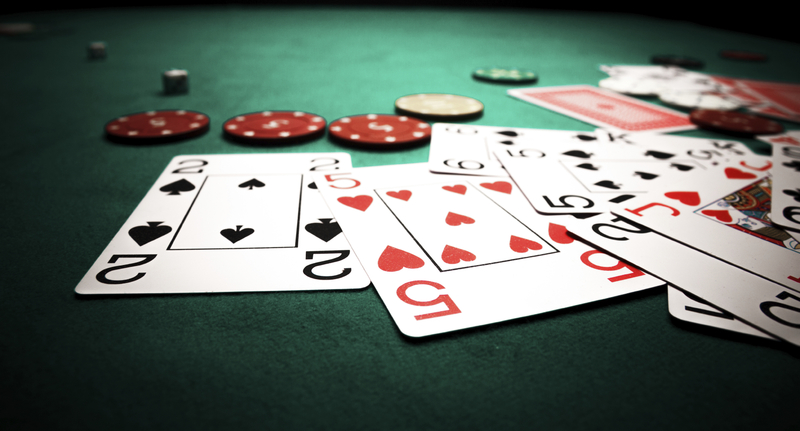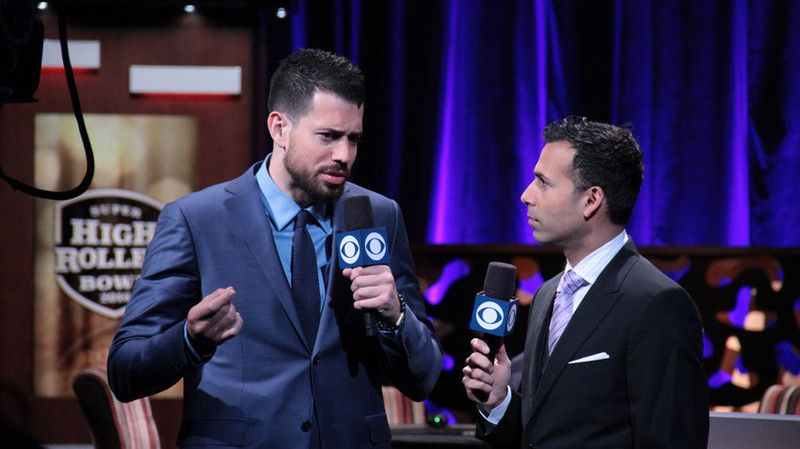






Mix Poker: Coming To A Cardroom Near YouWhy Mixed Games May Be Poised To Take Over As Dominant Form Of Poker |
|
|
 Poker remains in a perpetual state of evolution. The game is always changing.
Poker remains in a perpetual state of evolution. The game is always changing.
The players change. Styles change. Optimal strategies change. Even the games loosely defined under the vast poker umbrella change. Indeed, new games are created sporadically and spread in popularity. Meanwhile, others slowly die out, and gradually fade away.
A century ago, five-card stud was America’s most popular card game. Thirty years later, five-card draw became the dominant form of poker. Then, a generation later, seven-card stud was all the rage. However, today it’s all but impossible to find these games played anywhere inside public cardrooms. Not until sometime around 2005 did a relatively new game to many known as Texas hold’em come to supplant all other forms of poker as the supreme card game, not just in the United States, but all around the world.
Now, other forms of poker have sprung up like sunflowers in an open field after a springtime rain. And the seeds of poker change planted by a few are growing. Who knows? Perhaps these new games will catch on, as well.
There’s some chance that “Mix Poker” may be the next big thing. It’s already taken storm among an elite clique of the world’s top poker players. And so, it could be just a matter of time before lower-limit, recreational players also come to recognize the allure of Mix Poker.
WHAT IS MIX POKER?
While any poker game which includes two or more variants is technically a mixed format, “Mix Poker” (also known as “Mixed Poker” or “Mixed Games”) generally refers to a collection of games under the H.O.R.S.E. banner, as well as badugi, 2-7 triple draw, 2-7 no-limit single draw, pot-limit Omaha, and no-limit hold’em.
Among more skilled and experienced players, 7-, 8-, and 10-game combinations have become commonplace. Sometimes, the games included in the mix include negotiation, and even coercion. Since few players — even among the world’s best — play all the variants well, the games themselves have become poker pawns. In other words, they are tools in the negotiation. They’re trade-offs as each player seeks even the slightest (perceived) edge.
WHAT ARE MIX POKER’S “CARNIVAL GAMES?” AND WHAT DOES THAT MEAN EXACTLY?
“Carnival Games” might sound derogatory, but it’s not. Just like going to a carnival, you’re likely to see some pretty strange things, at least upon first glance. This certainly applies to some of poker’s more obscure poker variants which includes badacey, badeucey, drawmaha, drawmaha 2-7, razzdeucey, razzdacey, double-board Omaha, high-low triple draw (a.k.a. “Archie”) and various forms of super stud.
If all this sounds wild and crazy, well — you’re right. These games attract plenty of action and have come to replace more traditional forms of poker as the ultimate test of skill and adaptability.
WHERE IS MIX POKER PLAYED AND WHO PLAYS IT?
Mix Poker is rapidly gaining popularity and presence throughout the poker world, particularly at the highest levels. From a $10,000 buy-in event at the 2019 World Series of Poker, to several different live-limit games spread regularly inside the top Las Vegas poker rooms, to expert coverage on televised “nose bleed” games featured on PokerGo — Mix Poker does appear destined for expansion. It seems like a natural progression.
Just as no-limit hold’em was once considered a niche game played only be the world’s best players, other games may have similar potential. Certainly, as more novice players observe these games, become curious about them, and want experiment with more variety in their own poker repertoire, these Carnival Games could become poker’s next circus.
 MIX POKER — FROM THE PLAYER’S PERSPECTIVE
MIX POKER — FROM THE PLAYER’S PERSPECTIVE
Among the many enthusiasts supporting the emergence of Mix Poker is the ultimate “pro’s pro,” Mark Gregorich. Twenty-five years ago, Gregorich left a public-school teaching position in Washington State to pursue a poker career in Las Vegas, where he’s never looked back. While he’s a successful tournament player, his greatest success has been in live games. Most of his peers consider Gregorich to be one of the best Omaha eight-or-better players in the world. But, he’s likely a favorite in any game he’s in and has a great eye for game selection.
“One of the biggest challenges of Las Vegas mix games is they don’t get the tourist traffic like more familiar games, such as no-limit hold’em,” Gregorich says. “But those familiar with stud, Omaha, 2-7, and badugi can adapt to a new variety of games because they’re essentially just hybrids of those games mixed together.”
Gregorich also offered specific advice on one poker variant, badacey. His remarks are included here to provide some evidence of the commonality of objectives, but to also call out some key differences. Note that badacey is a five-card triple-draw split pot game where the objective is to make the best low (ace to five) and the best badugi (ace to four).
“Stringent starting requirements are vital,” Gregorich insists. “The immediate objective is making the badugi. For example, if you’re dealt Ac 3d 4h 6d plus a high card, it’s tempting to discard the high card and draw one, hoping to get ideally deuce or 5s. Yet the proper play is to draw two cards on the first draw. Again, the common/key mistake is keeping too many cards, trying to make a low but decreasing your chances of a making a badugi.”
Gregorich offered some more free advice: “It’s also advantageous to start up with ‘ground up’ type hands (A-2-3 vs. 4-5-6). Furthermore, badacey is not for the most part a slow play game. One-card draws should be raised and/or re-raised with the possible exception when against an opponent with a wide starting range where slow play can be beneficial.”
Gregorich’s comments are quoted here to illustrate the complexity of these games, but also accentuate the fact that it may take novice (and even some very good players) quite a long time to master their optimal strategy. This means, there’s money to be made wherever Mix Poker is played, at least for the time being.
MIX POKER — FROM THE BROADCASTER’S PERSPECTIVE
 Okay, so Ali Nejad isn’t just a poker broadcaster. He’s an intensely-dedicated poker player, too. Nejad is probably best known for his tireless work as a poker commentator. He appeared on NBC’s Poker After Dark and was the color commentator on the National Heads-Up Poker Championship. Nejad has also served as a correspondent for ESPN on its annual WSOP coverage, in addition to many other poker-related broadcasts.
Okay, so Ali Nejad isn’t just a poker broadcaster. He’s an intensely-dedicated poker player, too. Nejad is probably best known for his tireless work as a poker commentator. He appeared on NBC’s Poker After Dark and was the color commentator on the National Heads-Up Poker Championship. Nejad has also served as a correspondent for ESPN on its annual WSOP coverage, in addition to many other poker-related broadcasts.
Nejad is in a unique position to offer an impartial assessment of Mix Poker from multiple perspectives. As he’s become more exposed to it, he’s quickly become one of the format’s most enthusiastic advocates.
“Mixed Games were born out of need,” Nejad explains. "As the readily-available accessible wealth of poker knowledge continued to grow and evolve, finding an edge in a single variant cash game became increasingly difficult.
“For instance, back in the day, Limit players fell into one of two categories — flop game players and stud game players. H.O.R.S.E. became the magnet forcing them to mingle and be subjected to each other’s specialties. But with time, players caught on and edges again became elusive. This cat-and-mouse effort continues with various mixed-game formats, which were born of a blend of boredom-driven creativity and a renewed need for an edge. These are the mixes I love, which tend to ward off the purist pros."
Hence, Nejad also sees the games not just as more interesting than older, more well-known forms of poker, but also views them as potentially profitable to those willing to put in the time to learn them.
MIX POKER ON TELEVISION
Television audiences and poker fans everywhere are being introduced to the world of Mix Poker via PokerGo. This high-tech media conglomerate continues to be not just the driving force in ongoing televised poker, but has also become a serious trendsetter. PokerGo has demonstrated a willingness to go where other televised poker shows won’t. PokerGo doesn’t just cover the game as a passive observer. It’s transforming poker as an active participant and helping to expand it, as well.
PokerGo has already begun showing Mix Poker as part of its programming. No doubt, changing old habits sometimes takes time and isn’t always easy to interest viewers in something that may be new and different. However, as Mix Poker attracts more attention and increases its following, look for this pioneer in gaming media to continue spreading the Mixed Poker gospel, with success.
MIX POKER IN PUBLIC CARDROOMS
Currently, several cardrooms, mostly in Las Vegas and Los Angeles, are spreading Mix Poker. The Bellagio typically has a $40-$80 Mix Game, and either a $80-$160 or a $200-$400 on a nightly basis. For those with much bigger bankrolls, Bobby’s Room (also at the Bellagio) often spreads a super-high limit Mix Poker game — sometimes $1,000–$2,000 or higher. No need to call in advance or make a reservation. If you show up, the chances are they’ll make a seat for you.
This level of play is a key financial point for Mix Poker’s pending expansion. If “average” poker players can now afford to sit down and play the game(s), perhaps it’s just a matter of time before lower-limit players also become curious and want to try out something new.
 This is already happening in some places. Right now, the best niche opportunity for recreational players to expand their game horizons is at the Wynn poker room, which is spreading a $9–$18 game about five times a week. Don ‘Coach’ Shiflett serves as the game’s host and unofficial poker ambassador.
This is already happening in some places. Right now, the best niche opportunity for recreational players to expand their game horizons is at the Wynn poker room, which is spreading a $9–$18 game about five times a week. Don ‘Coach’ Shiflett serves as the game’s host and unofficial poker ambassador.
When contacted about this article on Mix Poker, Shiflett was eager to express his support for a wider variety of games. He invites all Mix Poker enthusiasts and those curious to learn more to contact him directly via email at [email protected].
Wynn Executive Director of Poker Operations Ryan Beauregard also commented on Coach Don and the emergence of Mix Poker.
“We are very lucky to have regular players like Coach who make the effort to organize the Mix Game. While the player pool is slowly growing, it’s still a big commitment to keep the gaming running on a regular basis. It’s nice to offer something here that visitors probably don’t get to experience at their home card room. It’s rewarding for everyone to see new players try the Mix for the first time. The games keep evolving, which means they are good action and never boring. I think players like to challenge themselves by learning new games, and with an affordable limit like $9-$18 they can do just that. The hardest part for most is getting comfortable with the $3 chips!”
There’s also a growing Mix Game and Mix Poker community active on social media, which has become a great source of information, news, updates, and even strategy: Join the mixed game poker Facebook group.
Ah yes, poker may be changing. But some things will always be the same.
